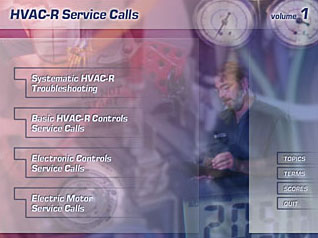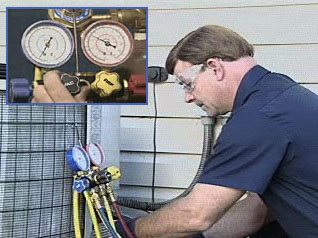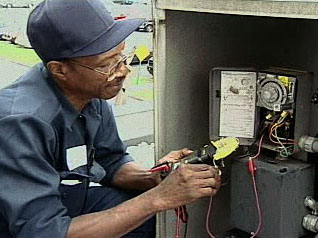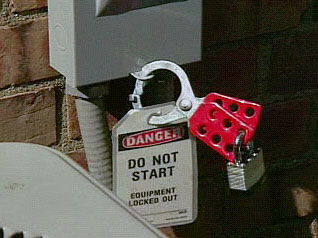HVAC Skills: HVAC-R Service Calls #1

- Product ID
- dlmrhvc1
- Training Time ?
- 87 to 174 minutes
- Language(s)
- English
- Video Format
- Standard Definition
- Required Plugins
- MasteryNet Player
- Lesson Interactions
- 6
- Quiz Questions
- 40



This training is the first in a series of three volumes. The series consists of 12 lessons intended to teach the basics of servicing HVAC-R equipment. The lessons move from general troubleshooting methods and procedures to working with specific types of equipment. Actual service calls are presented, giving the learner insight into authentic job situations. Customer service and safety are always stressed, with certain basic troubleshooting steps presented as universals.
The lessons are designed to show the student the steps needed to find the problem, not to detail the specific repair. The series provides an excellent visual introduction to the most common problems facing today’s HVAC-R technician.
![]() This course is in the Advantage™ format, to read about Advantage™ features click here.
This course is in the Advantage™ format, to read about Advantage™ features click here.

- Rich multimedia presentation with interactions and quiz
- Print certificate and wallet card
- You have 30 days to complete the course
Training for anyone interested in pursuing a career or furthering their career as an HVAC-R Technician.
- Systematic Hvac-R Troubleshooting
- Basic Hvac-R Controls Service Calls
- Electronic Controls Service Calls
- Electric Motor Service Calls
-
Understand how HVAC equipment works.
- Explain how HVAC equipment can fail.
-
Troubleshoot properly.
- Explain troubleshooting.
- Describe good troubleshooting skills.
- Recall that the technician should know normal operating conditions.
- Recall the first thing a technician should do before performing service on HVAC equipment.
- Recall what the technician should do when he arrives at the job site.
- Recall what the technician should do if the customer is angry or upset.
- Recall that once a repair is finished the technician should test the equipment.
- Recall that before making any repairs, the technician should always the customers approval.
- Explain how the technician helps protect the environment.
-
Troubleshoot basic HVAC controls.
- Explain wht technicians talk with the customer prior to checking the equipment.
- Explain why it is important to lock-out and tag the disconnect.
- Identify how the condenser fan is enregized.
- Explain how the removal of heat is controlled.
- Explain how the air handler works.
- Explain how the condensing unit compressor contactor coil receives voltage.
- Recall that the technician should wait 5 minutes for the condensing unit to come on.
- Identify when electrical female spade terminals should be replaced.
- Explain when the service call is completed.
-
Troubleshoot electronic controls.
- List 3 reasons why electronic controls are used to replace electro-mechanical controls.
- Explain what troubleshooting electronic controls is based on.
- Explain why it is important to check the dry bulb and the wet bulb temperatures.
- Explain why the techncian feels the discharge air.
- Recall that when a PTC device gets hot the resistan of the PTC decreases to a high value.
- Recall that it takes the PTC device 2-5 minutes.
- Describe how to complete the service invoice.
- Recall the best method for checking the performance of the PC board.
- Explain the purpose of a PTC device in a motor control.
-
Troubleshoot electric motors.
- Identify the normal insulating temperature of the motor.
- List causes of excessive heat in a motor.
- List what the start up amperage of a motor is dependent on.
- Explain ambient temperature.
- Identify the stage of motor operation when there is no current flow through the motor windings.
- Identify when the windings will over heat in a 3-phase motor.
- Recall the major cause of motor failure.
- Recall that motors draw the highest current during start up.
- Explain that start up current can be as high as 6-8 times the motor running amperage.
- Recall when installing a new motor the capacitor should be replaced.
© Mastery Technologies, Inc.

